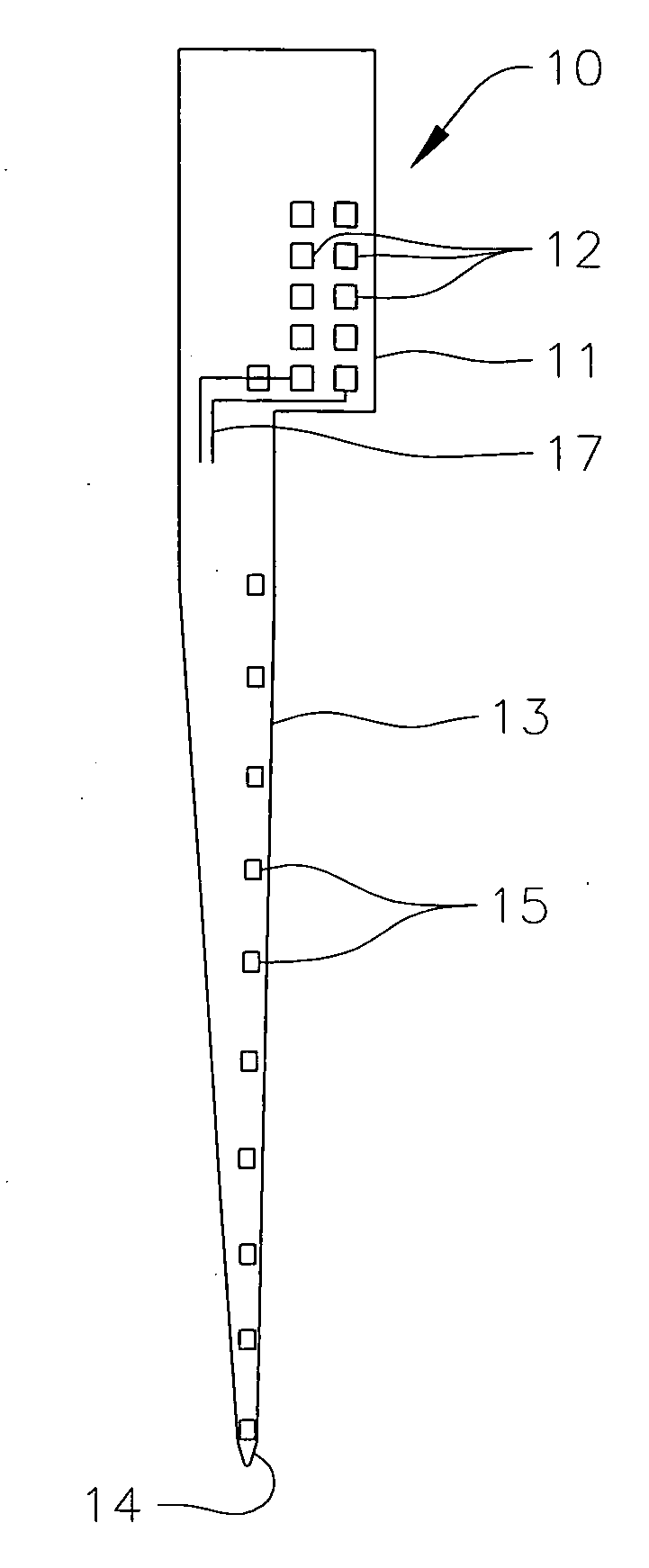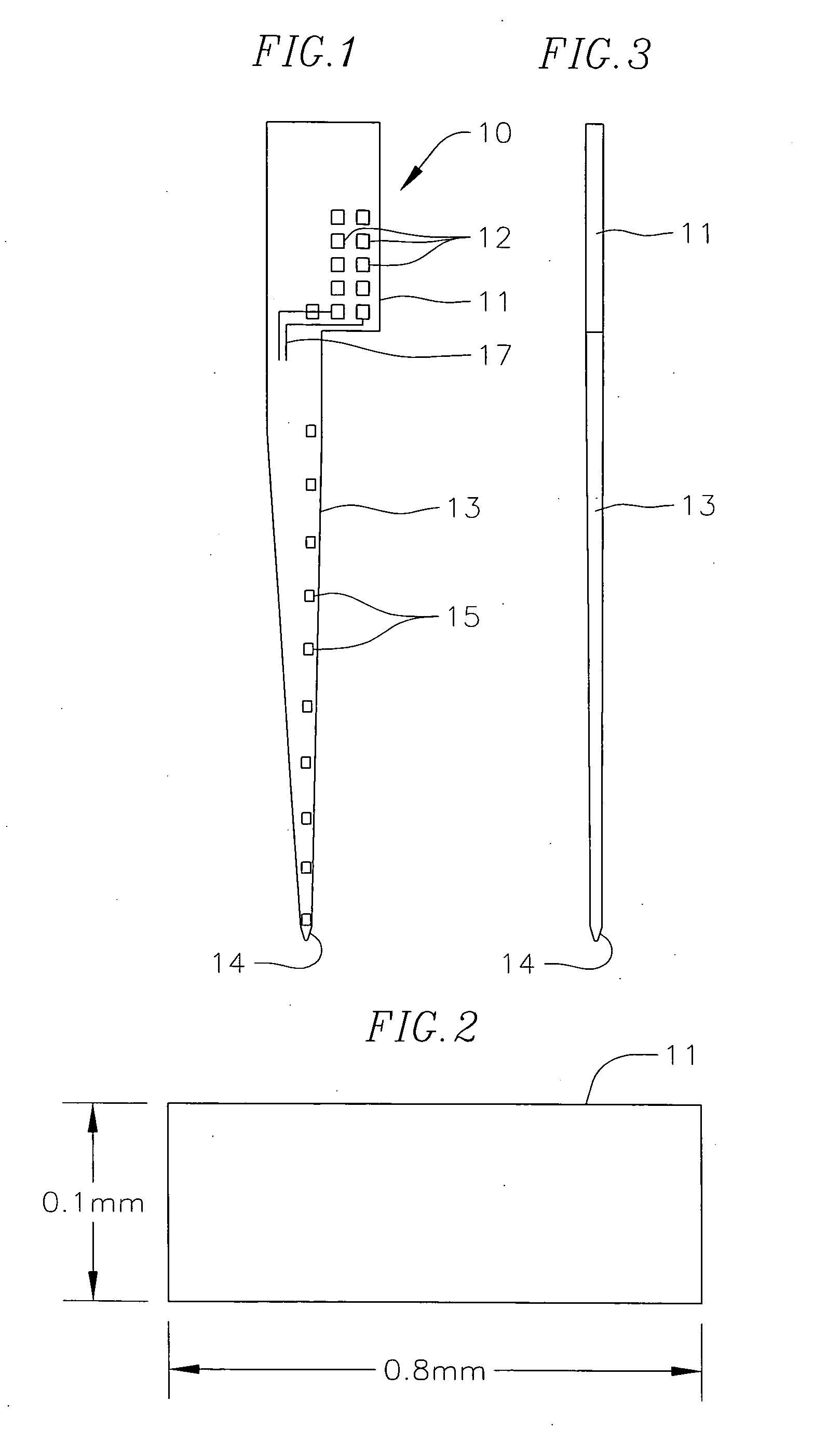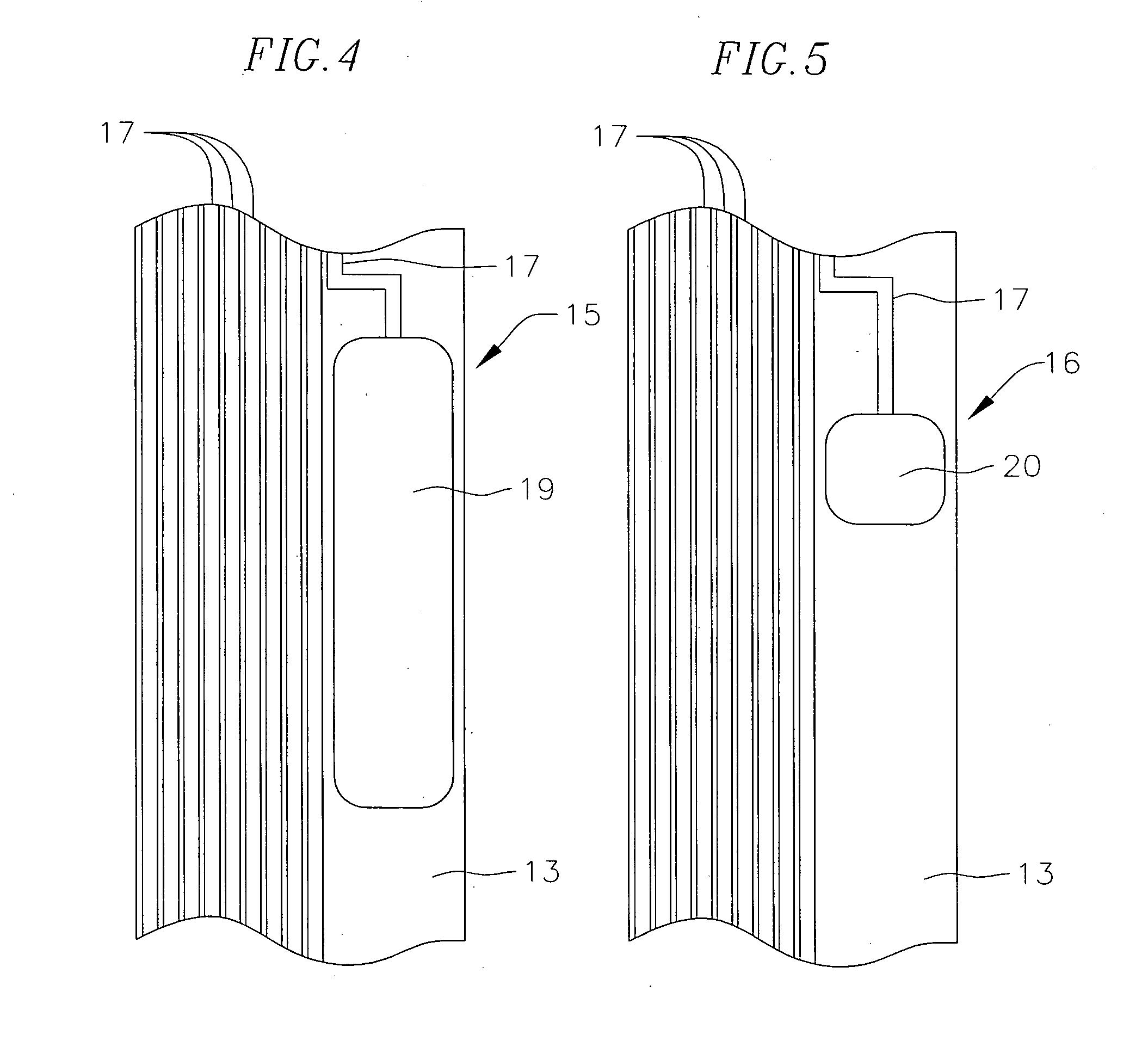Microelectrode array for chronic deep-brain microstimulation for recording
a microelectrode array and deep-brain microstimulation technology, applied in the field of deep-brain microelectrode array for implantation in deep-brain nuclei, can solve the problems of too large number of electrode sites required to span and populate the human stn or gpi, and the mechanism of action is not fully understood
- Summary
- Abstract
- Description
- Claims
- Application Information
AI Technical Summary
Problems solved by technology
Method used
Image
Examples
Embodiment Construction
[0021]FIGS. 1-3 illustrate a multielectrode silicon-substrate probe 10 according to the invention. The silicon substrate is preferably formed by deep reactive-ion etching which can yield a relatively strong and rigid structure of up to at least 0.1 mm in thickness. The body of probe 10 has an enlarged upper end 11 with a width of about 0.8 mm, a height of about 2 mm, and a thickness of about 0.1 mm. The upper end is a bonding pad with multiple (presently ten) conductive portions 12, preferably gold, to which conducting lead wires (not shown) are attached. After the leads are attached, the upper end is coated with a silicon elastomer.
[0022] Extending downwardly from the probe upper end is an elongated shank 13, about 10 mm in length. The shank has an upper-end width of about 0.4 mm, and tapers to a rounded tip 14. Commencing about 3 mm below upper end 11, there are ten stimulating-or-recording electrode sites 15 or 16 which are vertically spaced apart about 0.8 mm. These sites span ...
PUM
 Login to View More
Login to View More Abstract
Description
Claims
Application Information
 Login to View More
Login to View More - R&D
- Intellectual Property
- Life Sciences
- Materials
- Tech Scout
- Unparalleled Data Quality
- Higher Quality Content
- 60% Fewer Hallucinations
Browse by: Latest US Patents, China's latest patents, Technical Efficacy Thesaurus, Application Domain, Technology Topic, Popular Technical Reports.
© 2025 PatSnap. All rights reserved.Legal|Privacy policy|Modern Slavery Act Transparency Statement|Sitemap|About US| Contact US: help@patsnap.com



